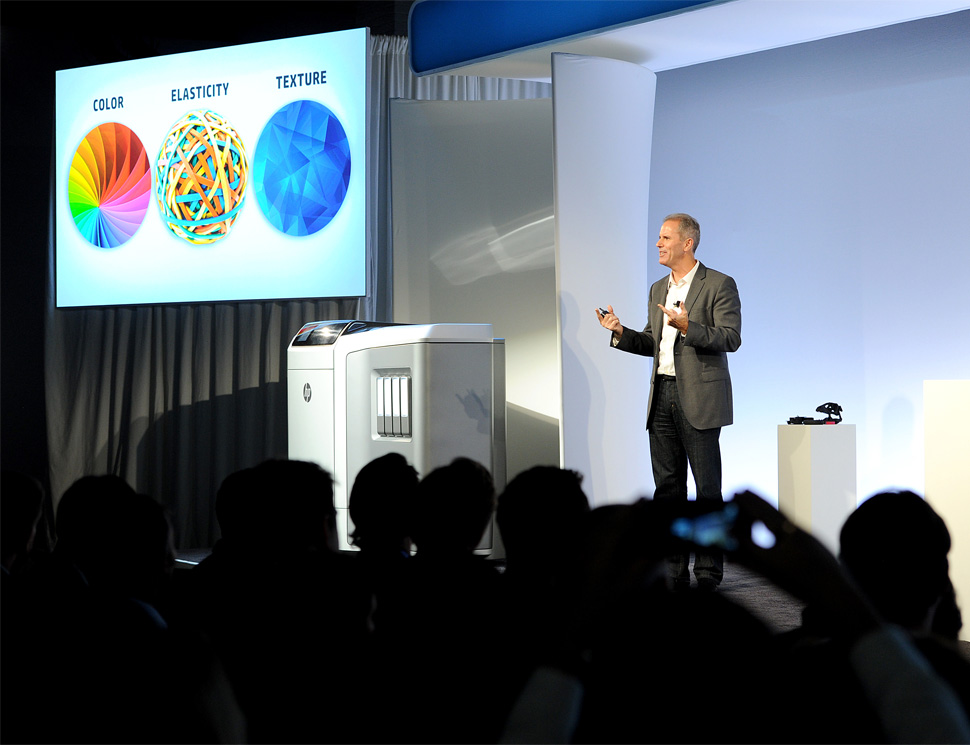
3rd November 2014 3D printer is 10 times faster than current models Hewlett-Packard (HP) has unveiled a 3D printer that it claims will be 10 times faster than current models.
HP has introduced its vision for the future of computing and 3D printing by unveiling its new "Blended Reality" ecosystem. Designed to break down the barriers between the digital and physical worlds, this ecosystem is underpinned by two key advancements:
"We are on the cusp of a transformative era in computing and printing," said Dion Weisler, executive vice president, Printing & Personal Systems (PPS). "Our ability to deliver Blended Reality technologies will reduce the barriers between the digital and physical worlds, enabling us to express ourselves at the speed of thought – without filters, without limitations. This ecosystem opens up new market categories that can define the future, empowering people to create, interact and inspire like never before." "As we examined the existing 3D print market, we saw a great deal of potential but also saw major gaps in the combination of speed, quality and cost," said Stephen Nigro, vice president of Inkjet and Graphic Solutions at HP. "HP Multi Jet Fusion is designed to transform manufacturing across industries by delivering on the full potential of 3D printing with better quality, increased productivity, and break-through economics." Multi Jet Fusion is built on HP Thermal Inkjet technology and features a unique synchronous architecture that significantly improves the commercial viability of 3D printing and has the potential to change the way we think about manufacturing.
Sprout – the first product available in HP's Blended Reality ecosystem – combines the power of an advanced desktop computer with an immersive, natural user interface to create a new computing experience. As shown in the image above, this puts a scanner, depth sensor, hi-resolution camera and projector into a single device, allowing users to take physical items and seamlessly merge them into a digital workspace. The system also delivers an unmatched collaboration platform, allowing users in multiple locations to collaborate on and manipulate a single piece of digital content in real-time. "We live in a 3D world, but today we create in a 2D world on existing devices," said Ron Coughlin, senior vice president, Consumer PC & Solutions, HP. "Sprout by HP is a big step forward in reimagining the boundaries of how we create and engage with technology to allow users to move seamlessly from thought to expression." Together, HP says these advancements have the potential to revolutionise production and offer small businesses a new way to produce goods and parts for customers. HP aims to invite open collaboration and partnerships in 2015 to further develop its 3D print system, with general consumer availability in the second half of 2016.
Comments »
|








